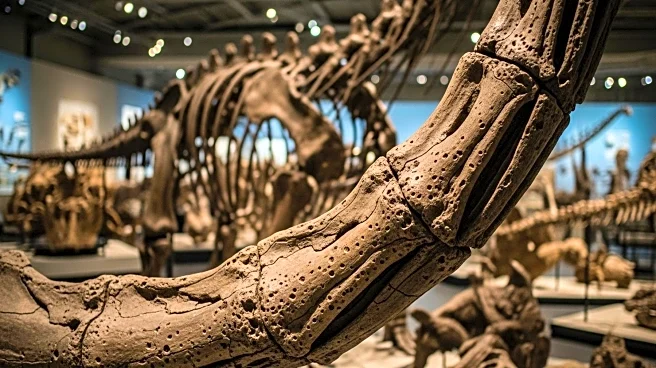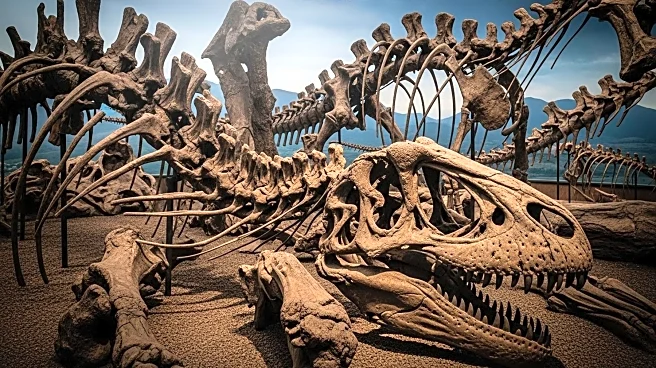What's Happening?
A study published in The Anatomical Record has uncovered evidence of osteomyelitis, a severe bone infection, in sauropod dinosaur fossils from Brazil. The fossils, dating back to the Late Cretaceous period, show signs of active infection at the time of the dinosaurs' deaths. The research, led by paleontologist Tito Aureliano, suggests that these infections were widespread among sauropods in the region, possibly contributing to their demise. The findings highlight the vulnerability of these massive creatures to microbial threats, challenging previous assumptions about their health and extinction.
Why It's Important?
This discovery provides new insights into the health challenges faced by dinosaurs, emphasizing the role of disease in their extinction. It suggests that environmental conditions in prehistoric times may have facilitated the spread of pathogens, affecting dinosaur populations. The study contributes to the understanding of dinosaur biology and ecology, offering parallels to modern disease outbreaks in wildlife. It underscores the importance of considering disease as a factor in extinction events, alongside catastrophic occurrences like asteroid impacts.
Beyond the Headlines
The research invites a reevaluation of dinosaur extinction narratives, highlighting the potential impact of diseases on their decline. It raises questions about the ecological dynamics of the Mesozoic era and the interactions between dinosaurs and their environment. The study also contributes to the broader field of paleopathology, encouraging further investigation into the health and disease of ancient species. Understanding these factors can provide valuable lessons for contemporary wildlife conservation and disease management.











